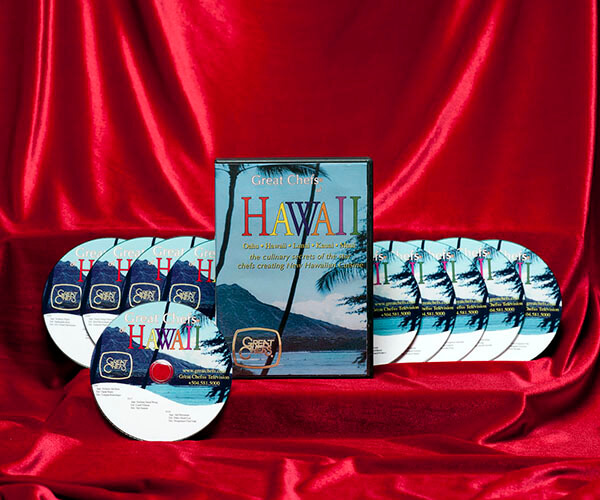“Is recipe testing a vanishing art?” – By Russ Parsons – LA Times
NOTE: All Great Chefs recipes, although prepared by Professional Great Chefs, they were tested by one staff member and a minimum of one home cook before being published in the Great Chefs cookbooks.
Providence chef Michael Cimarusti in The Times Test Kitchen.
By RUSS PARSONS contact the reporter Russ Parsons
Recipes have never been easier to find. No need to dig through cookbooks, magazines or newspapers. You just type a name — or even just a couple of ingredients — into a search engine and you’ve got dozens of choices at your fingertips.
But how do you know they’ll really work? At the same time the number of available recipes has gone through the ceiling, their reliability has gone into the basement. Recipe testing is becoming a lost art.
Cookbook publishers trust their authors to do the recipe testing, but with cookbook advances declining to next to nothing, few writers can afford to hire independent testers to make sure the recipes really work.
Several big food magazines such as Bon Appetit, Cook’s Illustrated, Saveur and Sunset still have very active test kitchens. But with cooking being such a hot topic, recipes are showing up in all sorts of publications that never before considered them and are ill-equipped to test them.
For newspapers, test kitchens have always been the province of a few of the biggest and best. But cost-cutting has decimated even those. Today, the Los Angeles Times is the only newspaper that still maintains a test kitchen with a test kitchen director.
The San Francisco Chronicle and Chicago Tribune have test kitchen facilities that writers can work in, but not designated testers.
Tribune Food Editor Joe Gray says the test kitchen is heavily used by staff writers, even though the test kitchen director left several years ago.
“Reports of our test kitchen’s death have been greatly exaggerated. We still use it and rely on it heavily. We’re shooting today, actually, a drink story on bartender tricks that folks can use at home, plus a preserves story using dried fruit for more intense flavor.”
The Washington Post does not have a test kitchen, but deputy food editor Bonnie Benwick heads the recipe testing and Post food editor Joe Yonan says a kitchen is planned for the new building the paper is moving into next year.
The New York Times uses freelancers for recipe testing and Times Food Editor Sam Sifton says the freelance system works well for them. “We have a corps of regular recipe testers who work with those of us who develop recipes for the Times, and a group of talented freelance photographers as well. It might be nice to have a test kitchen to wander down to at lunch, but I find we get great results — and extremely diverse photography — using the system we’ve put into place.”
The Los Angeles Times test kitchen, which is headed by Test Kitchen Director Noelle Carter, is where every recipe that runs in The Times is tested — often multiple times — to make sure it works. It’s also where most of the photographs of food that you see are shot. The dishes are prepared in the kitchen, then taken right next door to the photo studio.
The Times Test Kitchen has a long history. It was formally opened in 1931 as the “Ideal Kitchen,” headed by the ubiquitous Marian Manners (actually, the pen name for a succession of food editors, including Ethel Vance Morse and Fleeta Louise Hoke).
The food section back then was called the Home Service Bureau and the kitchen, which was located in The Times auditorium, was used mainly for teaching cooking classes. The opening program in 1931 featured an early California menu including “chicken in piquant almond sauce” and “the ever-popular chiles rellenos,” according to a newspaper story at the time.
The classes were extremely popular. One three-day special session at the Shrine Auditorium in 1939 drew a reported 7,000 students.
A new kitchen for testing recipes was opened in The Times building in 1935. “Of course we had to have an ultra-modern kitchen that would be in perfect harmony with this magnificent Times Building,” Manners was quoted as saying at the time. She then extolled the kitchen’s many features, including the linoleum, the cabinetry and the Magic Chef range, which “has the new chrome legs.”
The current roughly 750-square-foot facility was opened a in 2000 when The Times editorial department expanded and the features staff, including Food, moved from the third floor to the second floor. Before that, since 1980, recipes had been tested in a much smaller Test Kitchen on the third floor.
But even though this new kitchen is much larger, visitors who might have imagined it being packed with only the latest and most advanced equipment might be disappointed. That’s not really how test kitchens work.
That’s because the goal of any test kitchen is not the production of exciting new food, it’s the perfecting of recipes so they can be reliably reproduced by any home cook.
It was true in the 1930s, and even though today we seem to be flooded with recipes everywhere we look, it’s even more necessary now.
Add to Favourites











